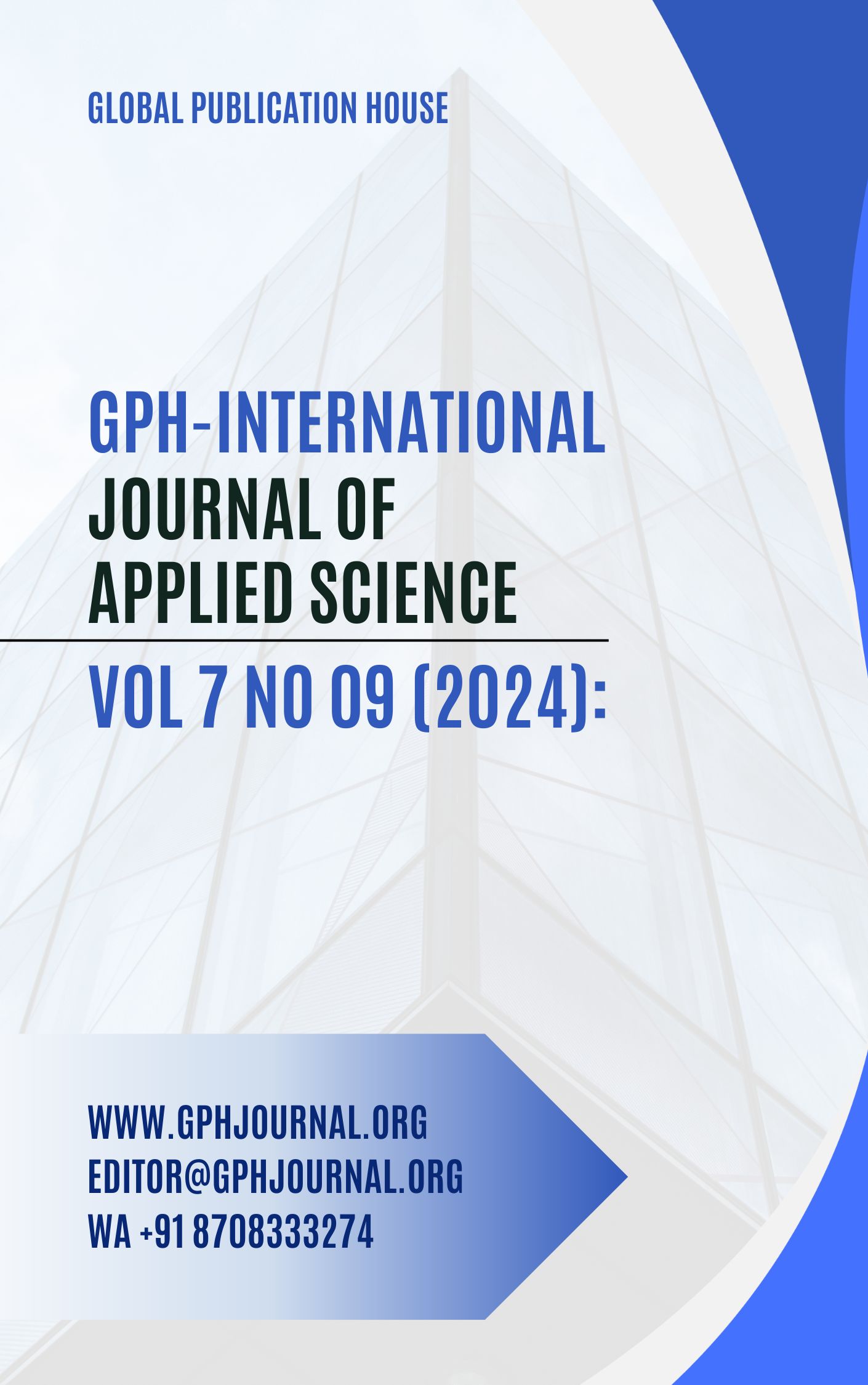Pattern of Childhood Mortality at Benghazi Children Hospital
Abstract
الملخص:
تعتبر وفيات الأطفال مصدر قلق كبير للصحة العامة، وخاصة في البلدان النامية. وهو أحد أهم مؤشرات التنمية وعامل في تحديد متوسط العمر المتوقع.الهدف: هدفت هذه الدراسة إلى التعرف على نمط وأسباب وفيات الأطفال في المستشفى العام (مستشفى الأطفال بنغازي) على مدى 3 سنوات.طرق البحث: أجريت دراسة بأثر رجعي في مستشفى الأطفال بنغازي على مدى ثلاث سنوات (يناير 2018 - ديسمبر 2020). تم جمع البيانات من السجلات الطبية للرضع والأطفال (الذين تتراوح أعمارهم بين شهر واحد إلى 16 سنة) الذين توفوا في المستشفى المستهدف. وتم استعراض التفاصيل الديموغرافية والأسباب الرئيسية للوفيات.النتائج: تم تسجيل إجمالي 691 حالة وفاة خلال فترة الدراسة، أي بمعدل وفيات قدره 1.4%. وشكل الذكور 353 (51.1%) والإناث 338 (48.9%). وكان معدل الوفيات في الغالب في الفئة العمرية أقل من سنة واحدة (58.7٪). وكانت الأمراض المعدية (21.7%) والجهاز العصبي (19.8%) والجهاز التنفسي (19.4%) هي الأسباب الجوهرية الأكثر شيوعاً للوفيات. وكانت الأسباب الخارجية مسؤولة عن أقل عدد من الوفيات. وكان الالتهاب الرئوي هو السبب المباشر الرئيسي لوفيات الأطفال في المستشفيات من جميع الأعمار.الخلاصة: تمثل الأمراض المعدية السبب الأكثر شيوعاً لوفيات الأطفال. ويلزم بذل جهود خاصة (وقائية وعلاجية) لمكافحة خطر وفيات الأطفال.
الكلمات المفتاحية: أسباب الوفاة، وفيات الأطفال، ليبيا، نمط الوفيات، وفيات الأطفال دون سن 5 سنوات.
Abstract
Children mortality is a major public health concern, particularly in developing countries. It is one of the most important indicators of development and a factor in determining life expectancy. It can also inform health services policy makers about matters to prioritize. This study aimed to identify the pattern and causes of childhood mortality in a tertiary public hospital (Benghazi Children Hospital) over a 3- year period. Retrospective study was undertaken at the Benghazi Children Hospital over a three-year period (January 2018-December 2020). Data was gathered from the medical records of infant and children (aged 1 month to 16 years) of age that died in the Benghazi Children Hospital. Demographic details and the main causes of deaths were reviewed.The result of this study indicated that, atotal of 691 mortalities were recorded during the study period, giving a mortality rate of 1.4%. Males constituted 353 (51.1%) and females constituted 338 (48.9%). The mortality rate was the highest in the age group of less than 1 year (58.7%).Infectious diseases (21.7%), nervous system disorders (19.8%) and disease of the respiratory system (19.4%) were the most common intrinsic causes of deaths. Extrinsic causes were responsible for smaller number of deaths (1.2%).Pneumonia was the leading immediate cause of deaths in hospitalized children among all ages.
Study results concluded that infectious diseases represented as the most common systemic cause of child mortality. Special efforts (preventive and curative) to combat the risk of childhood mortality are needed.
Downloads
References
2. Sarangi R, Pattnaik L, Satpathy SK, & Sahu MC.Mortality pattern of under- five children: A hospital- based cross- sectional study in a tertiary care hospital of India. Asian J PharmClin Res 2017; 10(9): 82-84. DOI: http://dx.doi.org/10.22159/ajpcr.2017.v10i9.17895
3. Sharrow D, Hug L, Liu Y, and You D. UNICEF. Levels & Trends in Child Mortality: Report 2020, Estimates developed by the UN Inter-agency Group for Child Mortality Estimation. 2020
4. Hug L, Sharrow D, & You D. UNICEF. Levels and trends in child mortality: report 2017.
5. Zhu Y, Zhu X, Deng M, Wei H, & ZhangM. Causes of death in hospitalized children younger than 12 years of age in a Chinese hospital: a 10-year study. BMC Pediatr 2018;18(1), 1-7. DOI 10.1186/s12887-017-0981-y
6. Chopra M, Stirling S, Wilkinson D, Connolly C, & McCoy D. Paediatric admissions to a rural South African hospital: value of hospital data in helping to define intervention priorities and allocate district resources. S Afr Med J, 1998;88(6 Suppl), 785-788.
7. Deepak C, Krishna Kishore RV& Babu M. Mortality trends in a tertiary care hospital in Mysore. Int J Health Allied Sci2018; 7(2), 80-82. doi:10.4103/ijhas.IJHAS_57_1
8. Obiorah CC. Cause specific and trends of mortality in Nigeria: A six-year study of a tertiary hospital.Int J Med MedSci2020;12(1), 1-7.DOI: 10.5897/IJMMS2019.1409https://doi.org/10.5897/IJMMS2019.1409
9. Ayoola OO, Orimadegun AE, Akinsola AK &Osinusi K. A five-year review of childhood mortality at the University College Hospital, Ibadan. West Afr J Med 2005; 24(2): 175-179. doi:10.4314/wajm.v24i2.28192
10. HaoTK, Son NH.Mortality Pattern at Pediatric Intensive Care Unit Of Hue Central Hospital, Vietnam. BioMed J Sci & Tech Res 2018; 11(5): 8750-8753. DOI: 10.26717/BJSTR.2018.11.002155
11. Okoronkwo NC&Chappjumbo, AU. Pattern of morbidity and mortality of childhood illnesses at the children emergency room of Abia State University Teaching Hospital, Aba, Nigeria. The East and Central Africa Medical Journal 2015; 3, 73.
12. Ramnarayan P, Craig F, Petros A, & Pierce C. Characteristics of deaths occurring in hospitalised children: changing trends. J Med Ethics 2007; 33(5): 255-260. doi:10.1136/jme.2005.015768
13. Fajolu IB, &Egri-Okwaji MTC. Childhood mortality in children emergency centre of the Lagos University Teaching Hospital. Nigerian Journal of Paediatrics 2011;38(3):131 – 135.
14. Ishihara T & Tanaka H. Causes of death in critically ill paediatric patients in Japan: a retrospective multicentre cohort study. BMJ Paediatr Open 2019;19:3(1).doi:10.1136/bmjpo-2019-000499
15. Bucens IK, Reid A, Barreto AC, DwivediV&Counahan M. Three years of paediatric morbidity and mortality at the National Hospital in Dili, East Timor. J Paediatr Child Health 2013;49(12), 1004-1009. doi:10.1111/jp
Copyright (c) 2024 GPH-International Journal of Applied Science

This work is licensed under a Creative Commons Attribution-NonCommercial-NoDerivatives 4.0 International License.
Author(s) and co-author(s) jointly and severally represent and warrant that the Article is original with the author(s) and does not infringe any copyright or violate any other right of any third parties, and that the Article has not been published elsewhere. Author(s) agree to the terms that the GPH Journal will have the full right to remove the published article on any misconduct found in the published article.























